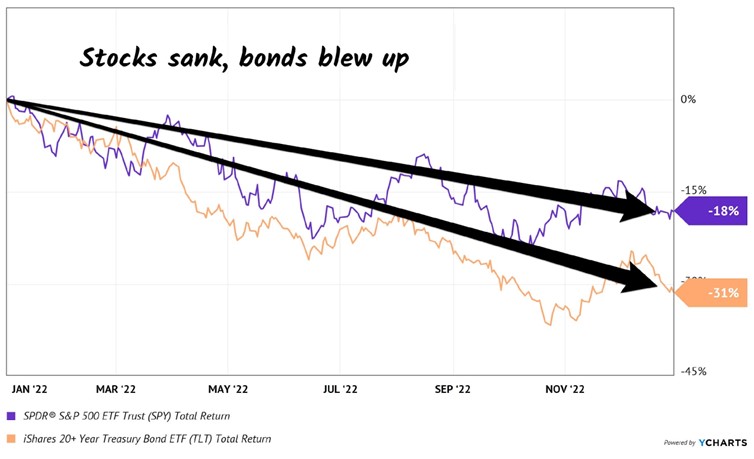Five trusts that should benefit from locking in low-cost debt
Investment trusts that borrowed on the cheap are set to reap long-term rewards, finds Jennifer Hill.
4th December 2023 10:28
by Jennifer Hill from interactive investor

Rapid rises in interest rates from historically low levels have added to borrowing costs for everyone – and investment trusts are no exception.
The cost of borrowing is relevant to this type of fund because one of the unique features of the investment trust structure is the ability to use gearing – to borrow money to invest alongside shareholders’ capital.
Some trusts use gearing to boost capital returns, while others deploy it to augment income. Gearing amplifies returns on both the upside and the downside but over time it tends to play to investors’ favour. It is one of the oft-touted reasons for the long-term outperformance of investment trusts over sister open-ended funds.
Let’s take a quick look at how gearing works in practice before exploring which trusts have been fortunate enough to lock in low-cost borrowing before interest rates started to rise.
Gearing explained
Investment trust boards set the maximum level of gearing. The investment manager determines how much of this to deploy at any given time, often in consultation with the board.
Some trusts run a certain level of structural gearing, while others tend to use it tactically – depending on how good they perceive the investment opportunity to be. Crucially, this must be weighed up against the cost of debt.
To have certainty over the cost of borrowing, many trusts at least partially fund their gearing through long-term, fixed rate loans – and did so with gusto when interest rates were at rock bottom. From the start of 2016 to mid-2021, a period characterised by historically low interest rates, boards locked in £4.1 billion of low-cost debt fixed for at least two years, according to data from the Association of Investment Companies (AIC).
Since the end of 2021, the Bank of England base rate has risen from 0.1% to 5.25% and is chief among the reasons for investment trust discounts moving to their widest level since the depths of the financial crisis in 2008.
Discount widening has most severely affected trusts investing in less-liquid asset classes, such as property, infrastructure and private equity, as investors fret over the hidden cost of higher interest rates on private companies and the prospect of write-downs in the value of underlying assets. That means caution is particularly required when bargain-hunting in the illiquid market.
James Wallace, an infrastructure and renewables research analyst at Winterflood Securities, notes: “The impact of rising interest rates on financing costs has been an important area of focus for investment trusts with significant gearing, predominantly those investing in alternative asset classes.
“When assessing which funds are best positioned, not only is it important to identify those with low interest costs but it is also key to understand the portion of debt that is fixed or hedged, the payback profile and the relevant maturities to assess refinancing risk.”
We asked advisers and analysts for their top low-cost-debt picks that should be in a strong position when investor sentiment improves.
1) Edinburgh Investment Trust
UK equity income trusts often deploy gearing to help maintain their strong track records of growing dividends paid to shareholders. Many have gross gearing around the 10% mark but their net gearing is generally less at present.
Of these, the Edinburgh Investment Ord
“looks to be in the best place going forward”, according to David Liddell, a director at IpsoFacto Investor.
It had a debenture costing 7.75% per annum, which matured in September 2022. However, a year prior to its maturity, the management team locked in replacement debt at a much lower rate of 2.44%, maturing in tranches between 2037 and 2057 – highly attractive relative to current market rates.
Although stock selection was the key driver of returns in the six months to 30 September, the revaluation of the company’s debt continued to enhance returns, adding around 1% to net asset value (NAV).
At the end of October, Edinburgh Investment Trust had net gearing of 5.2%.
2) City of London
has the longest track record of dividend increases of any investment trust at 57 years. It is a member of interactive investor’s
The trust has £80 million of low-cost debt of between 23 and 26-year maturity with a fixed rate of interest of 2.8% on a weighted average basis. Overall, it has £115 million of long-term structural gearing in place, as well as a more flexible overdraft facility of up to £120 million available to be deployed tactically.
“With short-term gearing relatively expensive currently, not to mention the uncertain outlook for markets, manager Job Curtis hasn’t employed any of the flexible overdraft,” says William Heathcoat Amory, a partner at Kepler Trust Intelligence.
He added: “That said, he views the long-term, fixed-rate borrowings that the board judiciously took out when interest rates were significantly lower as a big competitive advantage both in terms of generating yield and capital growth.”
The trust had net gearing of 6% at the end of October.
3) Mercantile Investment Trust
Kepler Trust Intelligence highlights the “very strong” balance sheet boasted by the UK mid-cap trust Mercantile Ord
thanks to the board securing long-term structural gearing at a “highly competitive” rate.
In September 2021, the board refinanced the trust’s ultra long-term debt, securing a total of £150 million at a blended rate of 1.9%. This consists of three tranches of senior notes including a £55 million note paying 1.98% maturing in 2041, a £50 million note paying 2.05% maturing in 2051 and a £45 million note paying 1.77% maturing in 2061. The notes run alongside a £175 million debenture at 6.125% expiring in 2030.
“These have secured the long-term funding requirements for the trust at a rate we believe can offer significant support to long-term returns,” says investment trust research analyst Ryan Lightfoot-Aminoff, also of Kepler Trust Intelligence.
The trust was geared to the tune of 13.4% on 31 October.
4) F&C Investment Trust
In the global equities sector, core Super 60 pick F&C Investment Trust Ord
is committed to using long-term structural gearing to enhance long-term returns. Manager Paul Niven has the ultimate responsibility for determining the trust’s level and the timing of gearing.
During 2021 and the first half of 2022, the board took advantage of historically low interest rates to extend the maturity of its fixed rate debt with varying maturity dates between 2037 and 2061 to take total borrowings to £581.8 million at a blended rate of 2.4% – a significant reduction from 7.1% at the end of 2013.
At the end of October, the trust’s net gearing was 5%. “This level is at the lower end of a five-year range, which has averaged 7.5%, and combined with the higher levels of liquidity reflects Paul’s more cautious outlook,” says Kepler analyst Nicholas Todd.
“However, this gives Niven the flexibility to take advantage of the cheap debt whenever he sees an opportunity to do so and a lower hurdle rate for returns on investments to ensure it remains accretive to performance over the long term.”
5) HICL Infrastructure
In the infrastructure sector, capital allocation remains a key focus for HICL Infrastructure PLC Ord
and in particular the reduction in its short-term floating rate debt. It has been the most active among peers with regard to disposals and made £324 million of divestments in the six months to 30 September, all above their respective March 2023 valuations.
The trust had net debt of £496.8 million at the end of the period. On completion of the disposals, its £650 million revolving credit facility is expected to be around £115 million drawn, down from £494 million at its peak in April.
Fund-level gearing will comprise of these drawings, around £87 million in letters of credit and £150 million in loan notes. Net of cash, this will represent just over 10% of NAV. To protect against further interest rate rises, in July the trust bought an option to cap £200 million of its exposure to SONIA (the average rate at which financial institutions lend to each other overnight) to 6.5% for three years.
“We continue to believe that HICL has an important role to play in diversifying income streams and portfolio returns and reiterate our buy recommendation,” says Investec analyst Ben Newell.

Gearing a positive in rising markets and a negative in falling markets.























